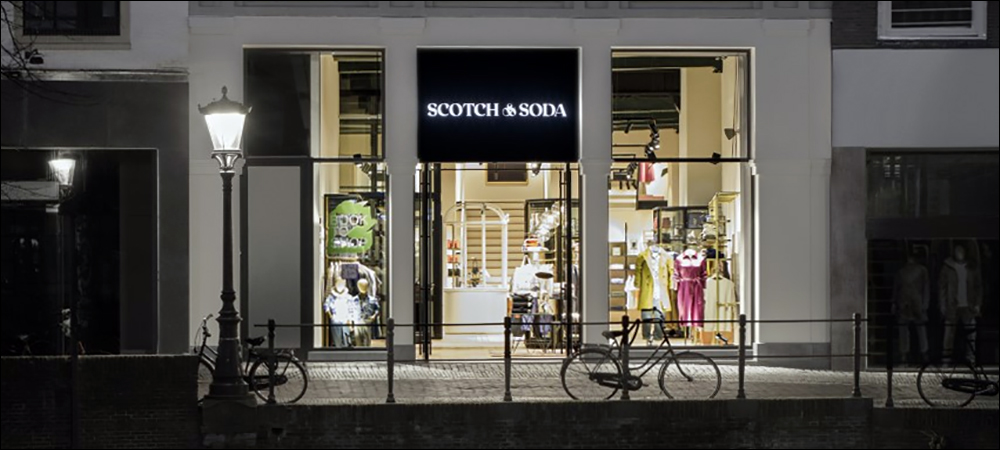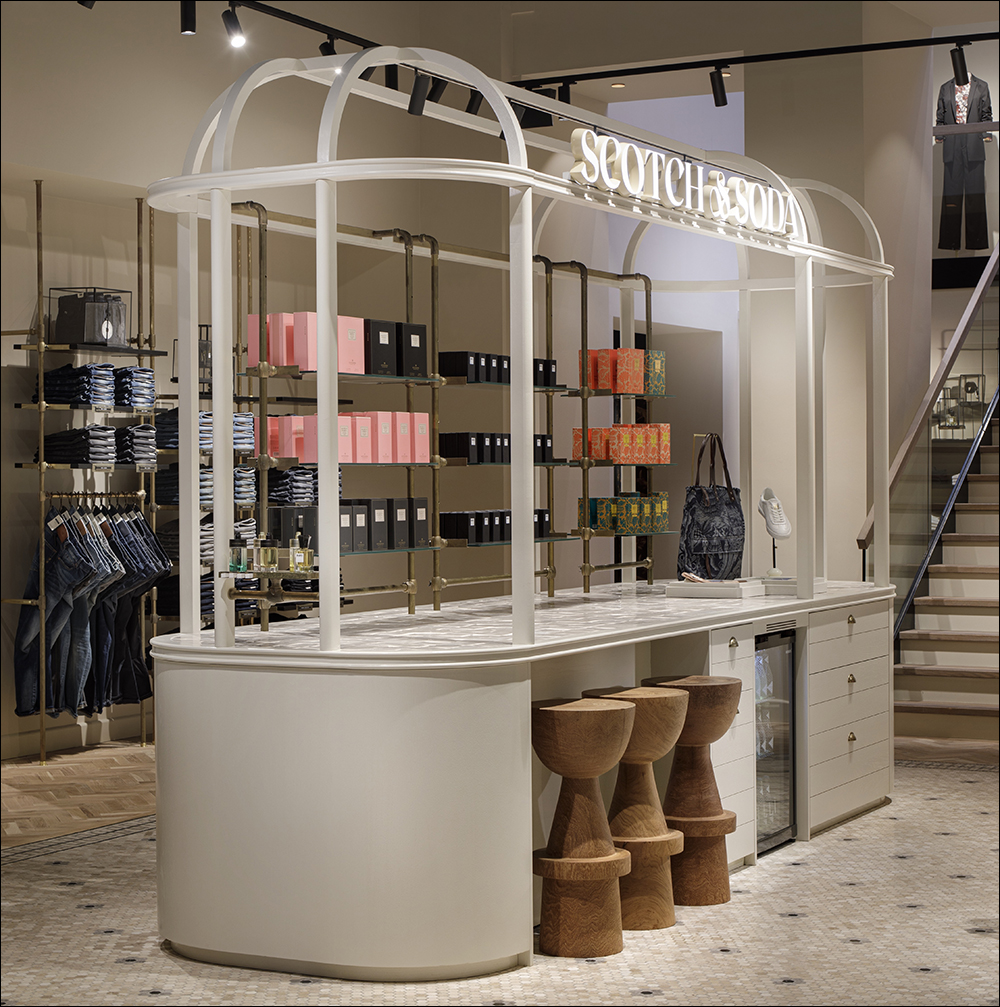Dutch fashion company Scotch & Soda intends to better serve its omnichannel customers, thereby improving its sales and inventory visibility, with a radio frequency identification solution that tracks every garment and accessory it sells. The system, centered around Nedap‘s iD Cloud platform, consists of passive UHF RFID tags attached to all merchandise, as well as handheld RFID readers in stores and cloud-based Electronic Product Code Information Services (EPCIS) management software. The technology is being rolled out across Europe and North America, where it is expected to be live in stores for inventory-management purposes by the end of this year. Next year, the tags will be read at the company’s new distribution center.
Scotch & Soda launched its first location in Amsterdam in 1984. Its products are currently being sold worldwide at 239 dedicated stores, with 10 more expected to open by the end of 2021. The company began as a men’s wholesale brand and has since offered clothing, footwear and fragrances for both men and women. The business was “born and raised in Amsterdam,” says Rik Kok, Scotch & Soda’s procurement director, but has a global vision. Throughout its growth, he says, the company has retained what he calls the “liberal outlook” of its home city. “We celebrate its free spirit by championing individuality, authenticity and the power of self-expression,” Kok explains, resulting in “an endlessly optimistic attitude reflected in our designs.”

The company began seeking a way to improve its inventory accuracy to provide efficient and timely omnichannel service to its customers. That meant ensuring the products customers purchased online were available and quickly routed from the nearest location. Ultimately, Kok says, there were three main drivers in using RFID for this effort: inventory visibility, an increase in sales and improved business-to-consumer delivery. In the search for technology solutions, he says, “We conducted a thorough market research, and Nedap came out as the best fit for our company.”
The retailer was new to RFID technology, having previously tracked inventory manually by scanning barcodes and visually counting products. Before the COVID-19 pandemic caused global supply chain issues, however, the company had already set a strategic growth plan, Kok says, with omnichannel as a driver. Therefore, the solution needed to be deployed quickly across all 162 European and North American stores. In that way, he adds, the company hopes to continue delivering products to shoppers in a timely fashion, whether or not they are at a Scotch & Soda store. The company planned a phased deployment approach and carried out several tests of the solution in Netherlands stores before implementation commenced in early 2021.

Rik Kok
Each product now receives a passive UHF RFID tag. Initially, the tags are being applied as goods are received at stores, though in the long term, Scotch & Soda intends to have all tags applied at the point of manufacture. The tags are adhesive labels attached to products’ price tags. Each store is being equipped with a single handheld reader, provided by Zebra Technologies, with a Bluetooth connection to an Android-based device. As a garment is manufactured, a unique ID number encoded on its label is linked to information about that product’s stock-keeping unit (SKU).
If goods arrive at the store untagged, employees apply tags and scan each ID and barcode. The collected data is uploaded to the cloud-based EPCIS repository software, and the product is stored in the shop’s back room or is placed on display. On a regular basis, workers conduct inventory counts to track which garments are in the facility. They can turn the reader on and walk through the merchandise, capturing tag IDs within a range of several meters. That data is then stored and managed in the EPCIS software for end-to-end visibility, according to Bruno Bakker, Nedap’s global account executive.
While refilling shelves at the store front, workers can use the reader in Geiger counter mode to search for specific goods in the back room, by interrogating tags to confirm each SKU and thus create a record indicating which products are on display. In addition, the system can be used for the packing and shipping of goods ordered online. Users can follow prompts in the EPCIS software to indicate which items are being shipped, thereby enabling appropriate replenishment orders based on what has been sold and shipped. The next phase will be to deploy RFID technology at the company’s newly constructed DC.

Bruno Bakker
With RFID readers, workers can read the tags of garments as they are received, and again when those goods are sent to a store, for the purposes of in- and out-bound verification, as well as e-commerce verification, in order to improve accuracy and efficiency. In the long term, Kok reports, Scotch & Soda intends to gain a view into all available merchandise, and to have goods shipped from the closest store to omnichannel customers. The company expects to reach this goal by the third quarter of 2022, he says, and the data can be analyzed to improve merchandise choices and better serve customers. “For analytics purposes, of course, all relevant data that can be measured will be taken in consideration or under review,” Kok states.
For Nedap, the deployment’s challenge was to provide a global rollout remotely. In the midst of the pandemic, Bakker recalls, “We needed to be prepared for a scalable online rollout.” Due to travel restrictions, that meant providing the support needed at each store, without Nedap’s staff being present at every site. “The world will never be the same” following the past two years’ supply chain issues, he states. “Retailers and brands are facing a world where there is an increase in customer expectations and a split in both online and offline worlds,” due to a rise in digitalization.
This, Bakker says, makes it important for brands and retailers to maintain loyal customers while attracting new ones. “One of the important elements that we identify as most important for customers is product availability,” he says, because of what he calls a consumer behavior shift. Nedap has witnessed more than 60 percent growth to its iD Cloud platform this year, he reports. For Scotch & Soda, progress has been steady, and the solution is slated to be taken live at all stores before the end of this year. The DC implementation will be carried out in 2022, once the retailer’s new warehouse is built.


